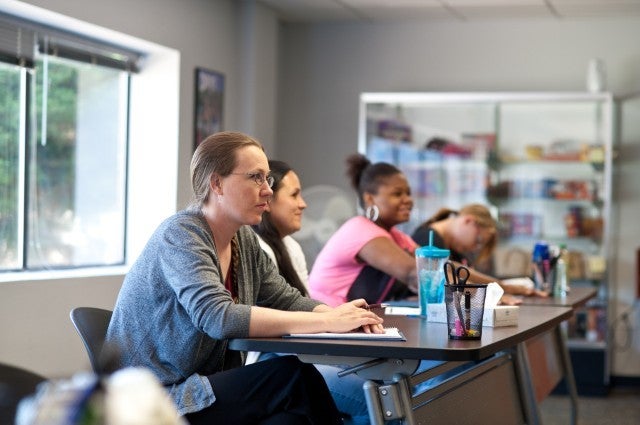
This is the second article in a two-part series. Read the first article in the series here.
Leaders need to deliver results. This is especially true in the social sector where organizational results can affect the lives of individuals served through essential community programs. While there are impactful social sector leaders, nonprofits still struggle to attract and retain talent overall.
Due to lack of capacity and funding, many nonprofits and social enterprises have not made it a priority to invest in their leaders. Lack of investment in leaders can lead to high turnover and hurt organizations’ sustainability and mission impact. A 2015 Bridgespan study found that the demand for effective nonprofit leaders remains high. While some turnover is healthy, there is high cost and time associated with turnover rates.
One way organizations can invest in their leaders and address retention rates is through professional development programs that cater to adult learning styles. The 70-20-10 philosophy is a proven model for learning. Designed at the Center for Creative Leadership, this approach suggests that when it comes to leadership education, 70 percent of learning occurs through active experimentation, 20 percent of learning occurs through sharing of thoughts and ideas, and 10 percent of learning occurs using the traditional classroom method.
Goodwill® uses the 70-20-10 model to teach leaders in our own leadership programs, but it wasn’t always that way. Our leadership programs were established in 1932 and focused on preparing existing Goodwill executives to take the helms of organizations that were relatively stable and in predictable environments. As social impact work evolved and became more complex, we also had to embrace a new style of education to teach future leaders about the intricate work of the Goodwill network.
Social enterprise leadership skills should range from strategic planning to informed decision-making and from entrepreneurial problem solving to executing with excellence. There are many different tenants of leadership an individual or company can subscribe to, and, in my experience, I’ve found that a complex system like the Goodwill social enterprise requires that leaders be able to:
1. Identify and collect a wide range of data and information across their complex social enterprise.
2. Take entrepreneurial risks to solve tough problems and create sustainable solutions.
3. Perform community-building activities that include recruiting, selecting and motivating individuals, and bringing them together as a unified team.
4. Prioritize resources and drive informed decision making.
5. Execute strategies and tactics, monitor operation performance and ensure robust feedback through the complex social enterprise.
By building development programs that leverage adult learning techniques and equip leaders to navigate through complex learning environments, nonprofits can make the types of investments that allow them to be sustainable and have ongoing impact on communities. As the systems and the organizations we lead become more complex and the problems we strive to solve seem more and more insurmountable, social enterprise leaders need to couple their data-driven entrepreneurial problem-solving skills with outstanding community building.
To distinguish your organization, develop the skills and capabilities to connect with the communities that you serve and understand the problems that you are trying to solve. Being of the community is even more important than being in the community. Connecting actions to impact, efforts to results and orchestrating your organizational energy in a way that optimizes your mission will allow your leaders to grow and execute throughout the complex ecosystems that make up our communities.
